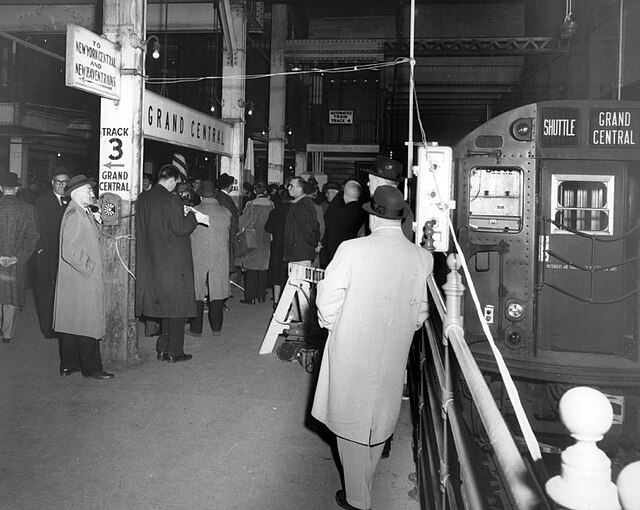Automatic train operation
Automatic train operation (ATO) is a method of operating trains automatically where the driver is not required or required for supervision at most. Alternatively, ATO can be defined as a subsystem within the automatic train control, which performs any or all of functions like programmed stopping, speed adjusting, door operation, and similar otherwise assigned to the train operator.
A diagram representing the different levels of automation possible on railways
Early ATO trial on a R22 train at track 4 of the 42nd Street Shuttle (right) in 1962.
Automatic train control (ATC) is a general class of train protection systems for railways that involves a speed control mechanism in response to external inputs. For example, a system could effect an emergency brake application if the driver does not react to a signal at danger. ATC systems tend to integrate various cab signalling technologies and they use more granular deceleration patterns in lieu of the rigid stops encountered with the older automatic train stop (ATS) technology. ATC can also be used with automatic train operation (ATO) and is usually considered to be the safety-critical part of a railway system.
Japanese-style ATC cab signalling indicator
A Tokyu Corporation train with ATC-10 indicator operating under normal conditions
The said ATC-10 indicator with ORP (Over Run Protector) engaged near the end of the ATC coverage area
Speedometer in a 0 series driver's cab, showing the ATC cab lights on top of the speed indicators






